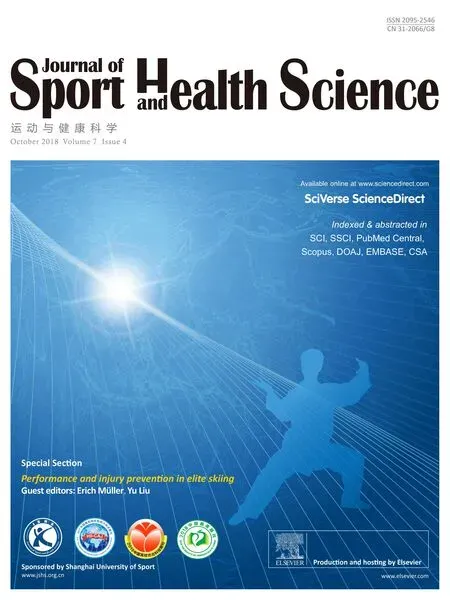Assessing effect of interaction between the FTO A/T polymorphism(rs9939609)and physical activity on obesity-related traits
2018-11-30AgataLeoskaDuniecZigniewJastrzeskiAleksanraZareskaAgnieszkaMaciejewskaKrzysztofFicekPaweCieszczyk
Agata Leońska-Duniec*,Zigniew Jastrz˛eski,Aleksanra Zar˛eska,Agnieszka Maciejewska,Krzysztof Ficek,Paweł Ci˛eszczyk
aFaculty of Physical Culture and Health Promotion,Centre for Human Structural and Functional Research,University of Szczecin,Szczecin 71-065,Poland
bFaculty of Tourism and Recreation,Gdansk University of Physical Education and Sport,Gdańsk 80-336,Poland
cFaculty of Physical Education,Gdansk University of Physical Education and Sport,Gdańsk 80-336,Poland
dGalen Medical Center,Bieruń 43-150,Poland
Abstract Background:The first described obesity-susceptibility gene was the fat mass and obesity-associated(FTO)gene.However,knowledge about FTO’s potential modifying effect on changes in body weight achieved through a training program is still limited.We decided to study the association between the FTO A/T polymorphism(rs9939609)and obesity-related traits.Additionally,we investigated whether body mass and body composition,as well as metabolic variables observed in physically active participants,are modulated by the FTO polymorphism.Methods:A group of 201 young Polish women were recruited for the study.The genotype distribution was examined in participants measured for selected changes before and after the completion of a 12-week training program.Results:Our results confirm the association between the common FTO A/T polymorphism and increased body mass index(BMI).Subjects with AA and AT genotypes had higher BMI during the entire study period compared with the TT genotype.Although parameters such as BMI,basal metabolism rate,tissue independence,fat mass percentage,fat mass,fat-free mass,total body water,high-density lipoprotein,and glucose changed significantly during the training program,none of the examined parameters changed significantly across the FTO genotypes(genotype×training interaction).Conclusion:We confirm an association between the FTO A/T polymorphism and increased BMI;this polymorphism is therefore a candidate for in fluencing obesity and other disease-related phenotypes.Although the gene×physical activity interaction was not shown,we want to point out that promoting physical activity is an important approach to controlling the increasing obesity epidemic.
Keywords:Exercise;FTO gene;Gene×physical activity interaction;Obesity-related traits;Polish women;Sport genetics
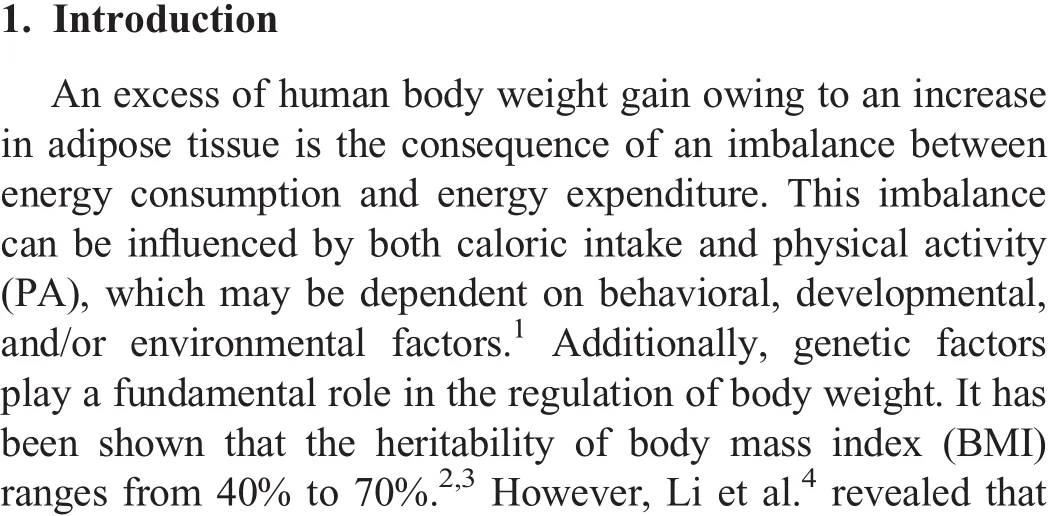
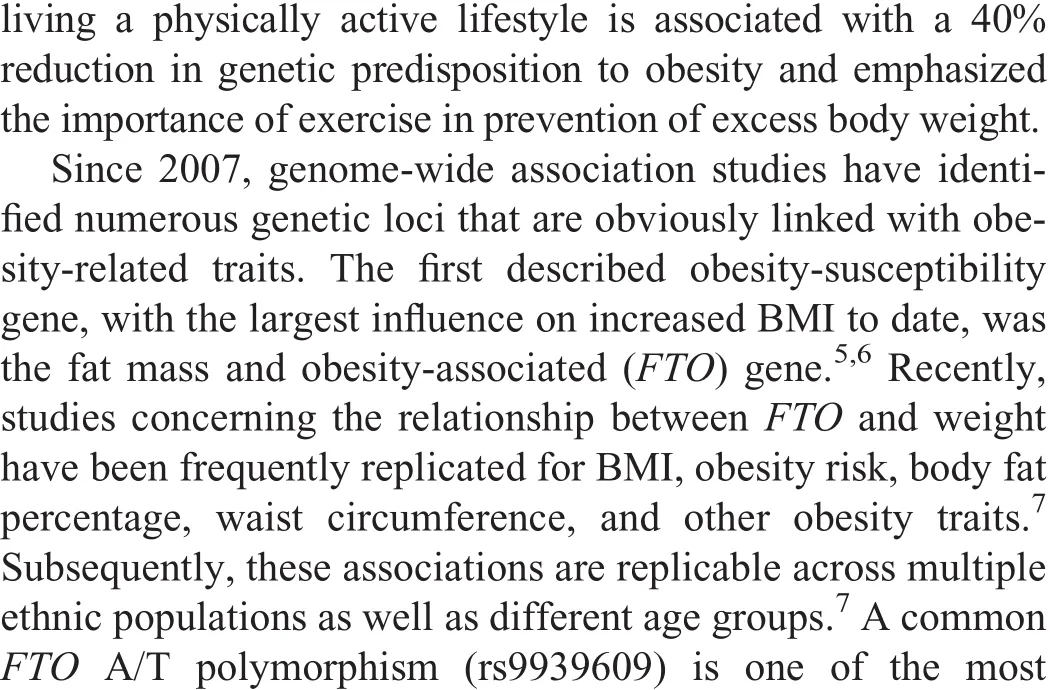
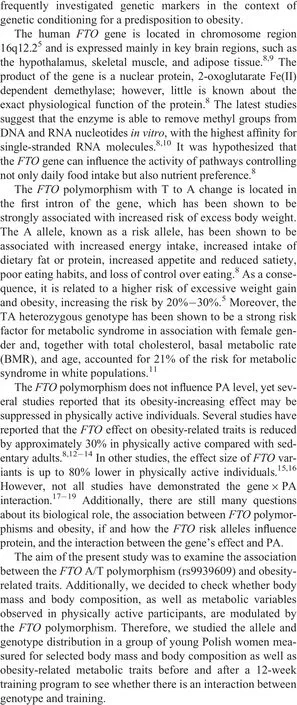

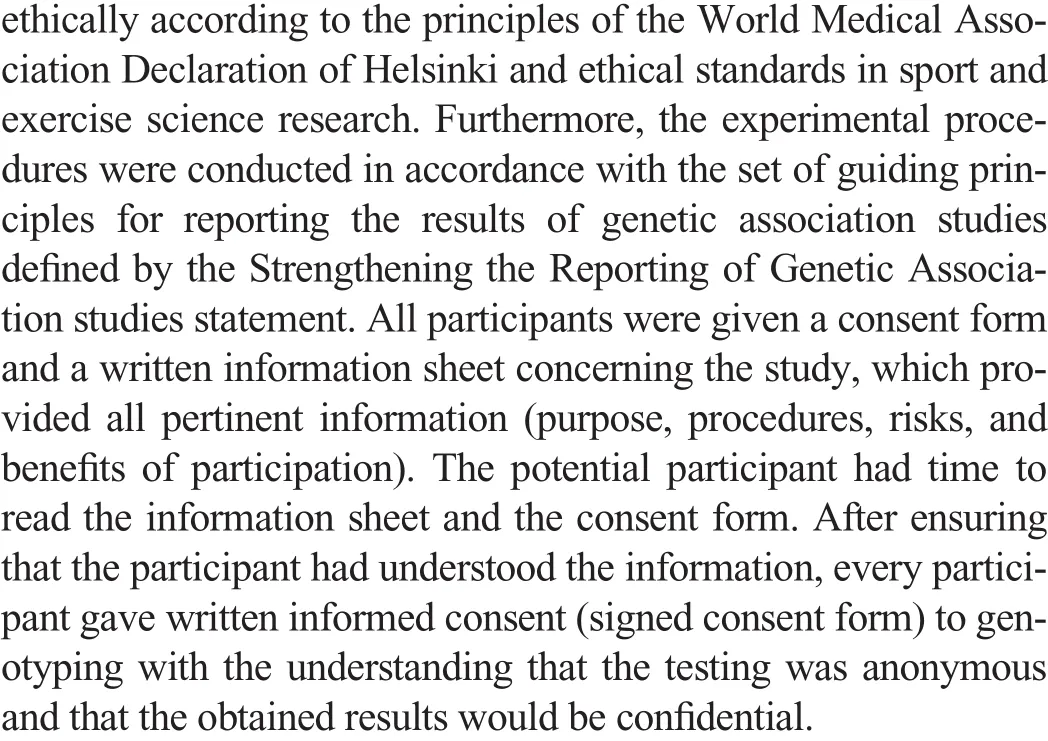
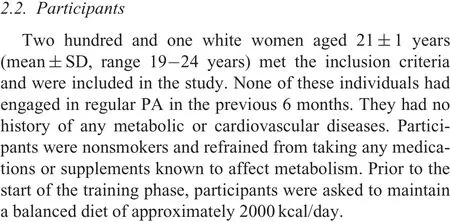
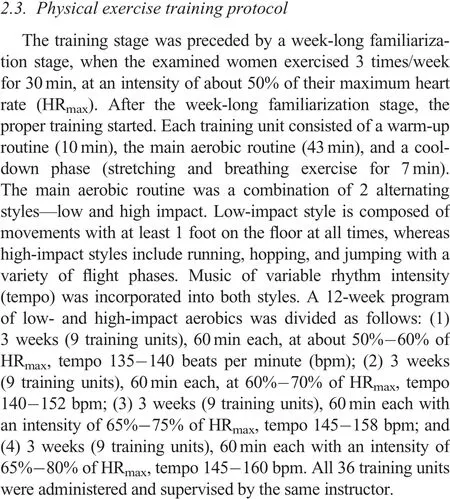

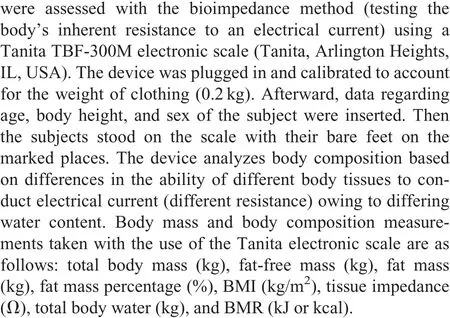
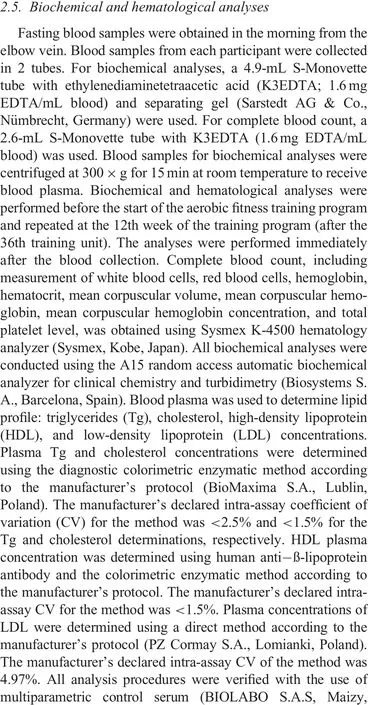

Table1 The FTO genotypes and response to training(2-way mixed analysis of variance,mean±SD).
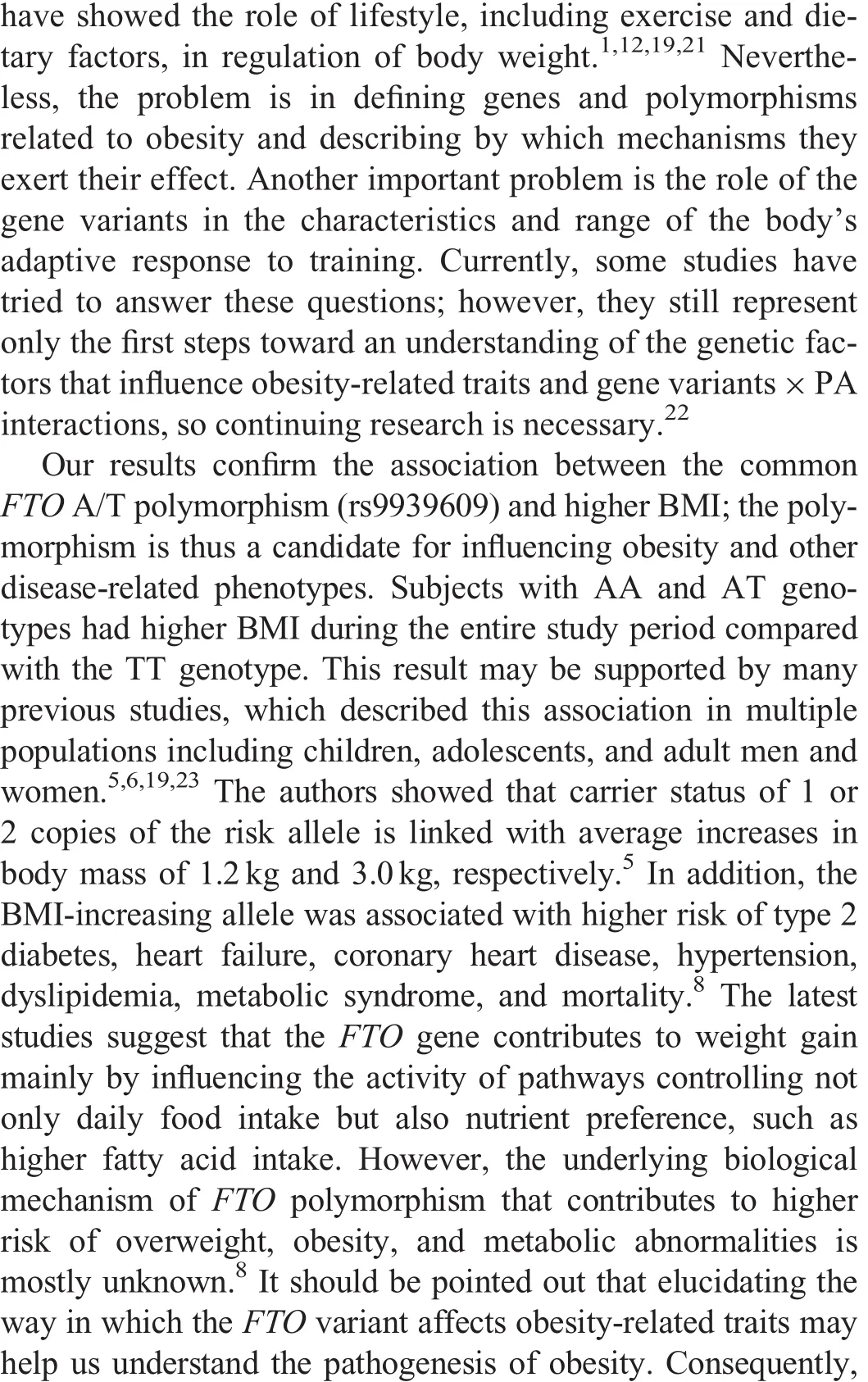
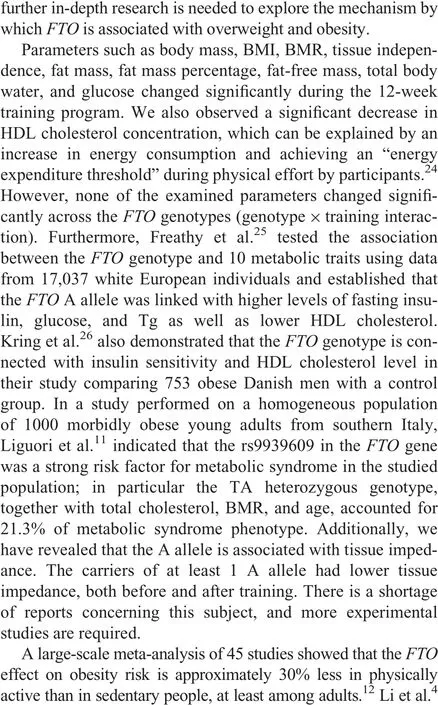



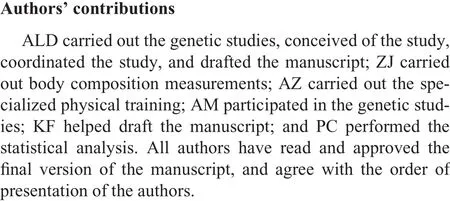

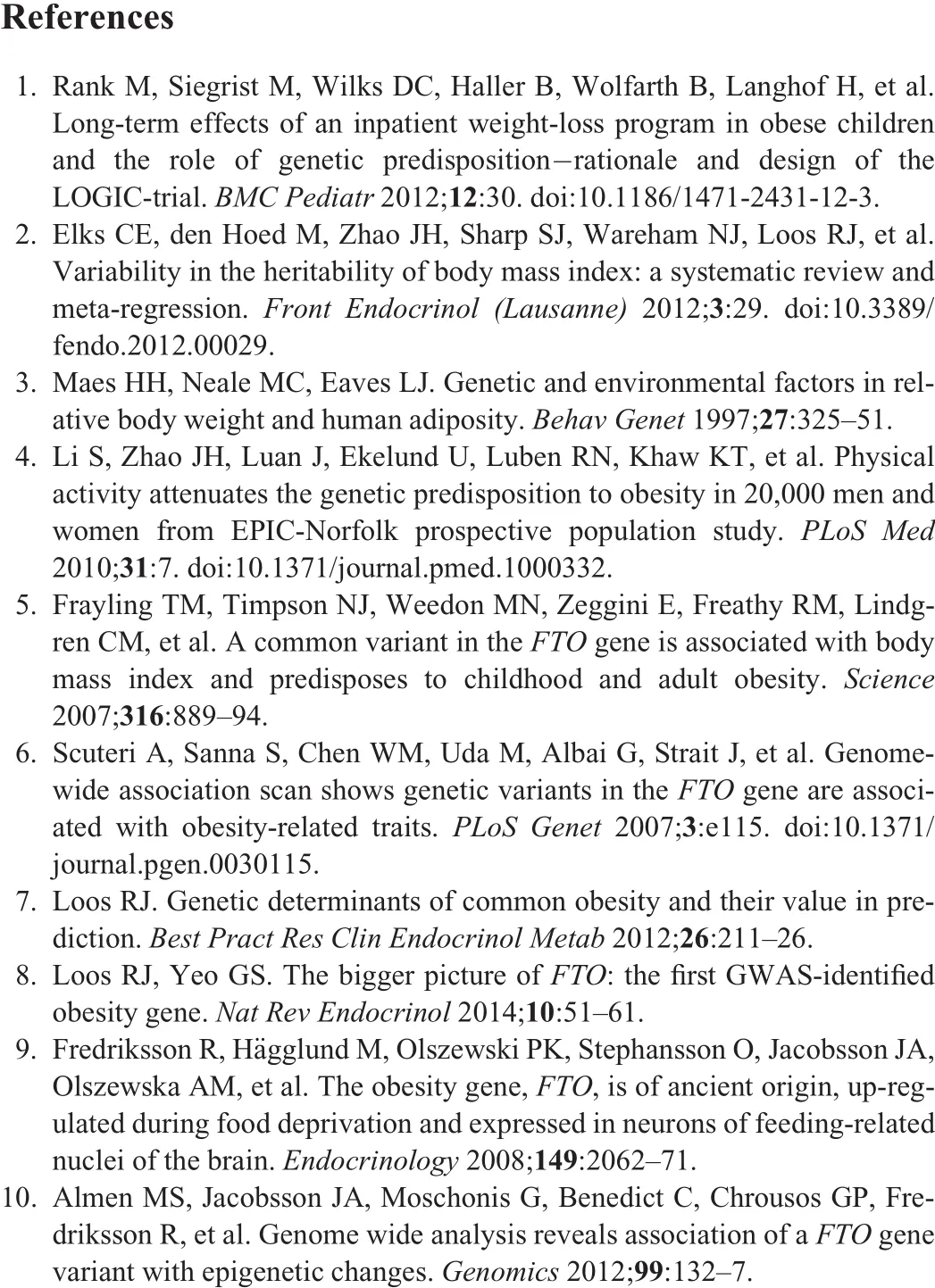
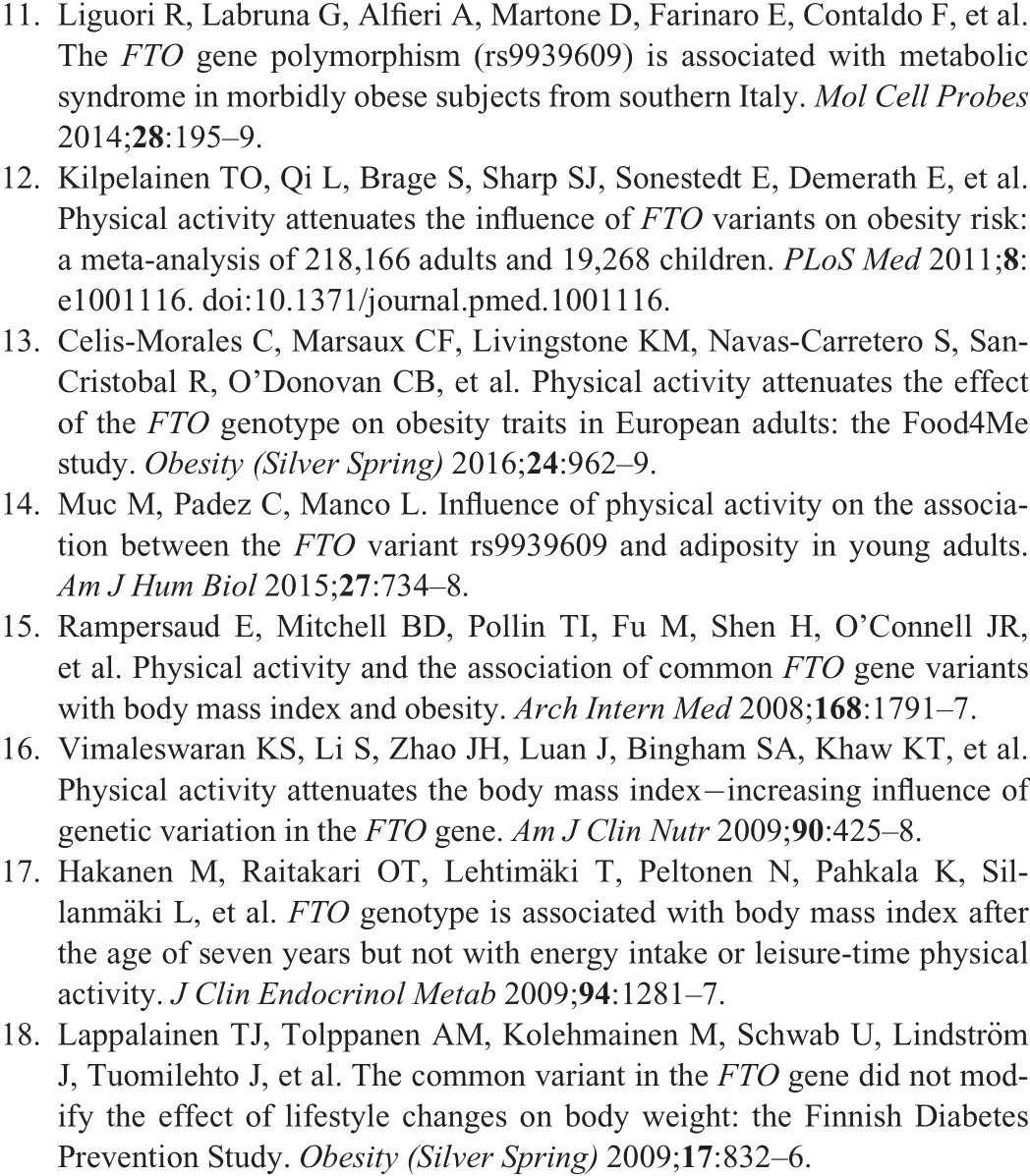
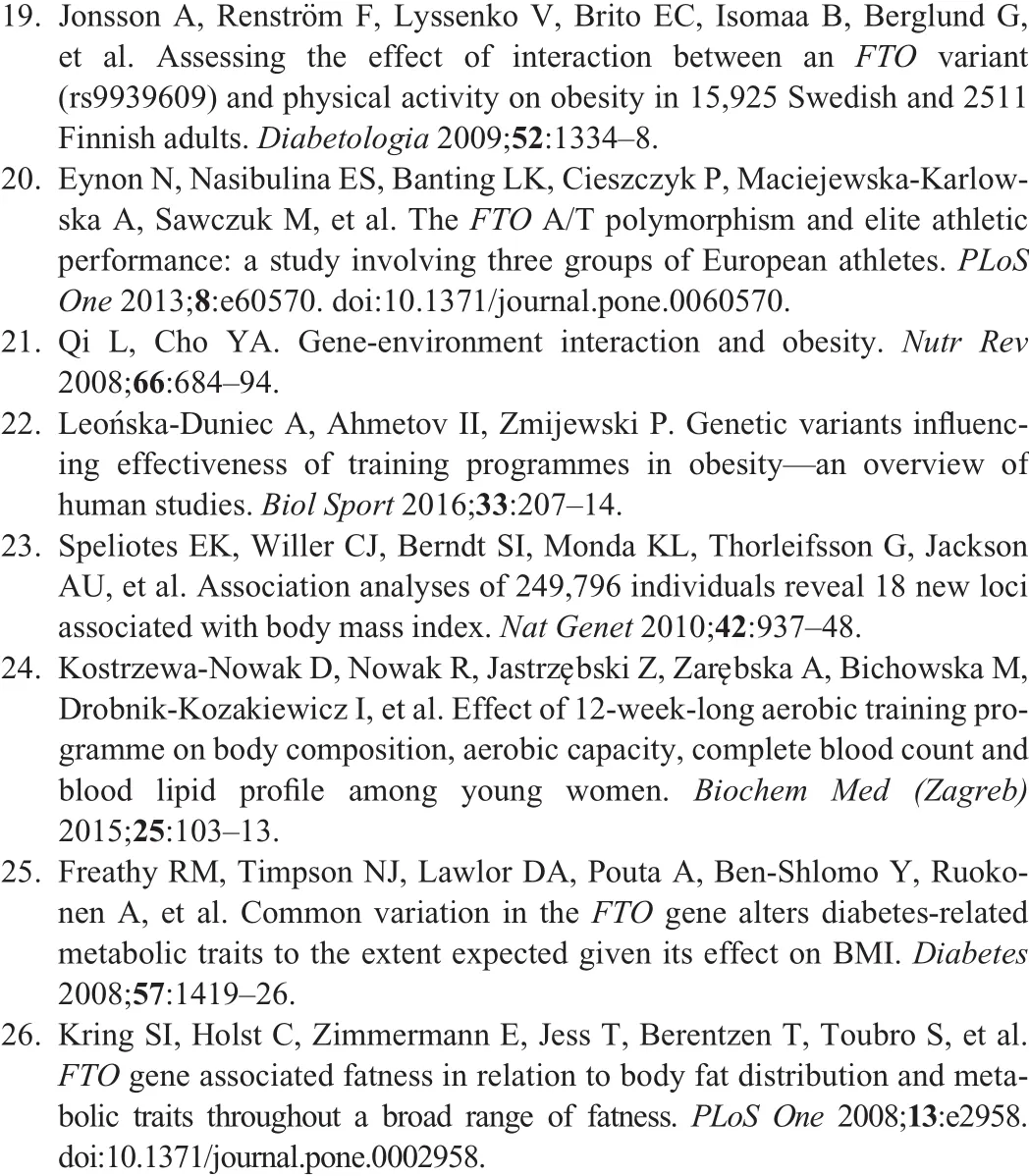
杂志排行
Journal of Sport and Health Science的其它文章
- Sport participation and vigilance in children:In fluence of different sport expertise
- Sedentary behavior and physical activity predicting depressive symptoms in adolescents beyond attributes of health-related physical fitness
- Intention and automaticity toward physical and sedentary screen-based leisure activities in adolescents:A profile perspective
- Effects of Rhodiola rosea supplementation on mental performance,physical capacity,and oxidative stress biomarkers in healthy men
- he effects of oral smokeless tobacco administration on endurance performance
- he effect of sex and performance level on pacing in cross-country skiers:Vasaloppet 2004-2017
